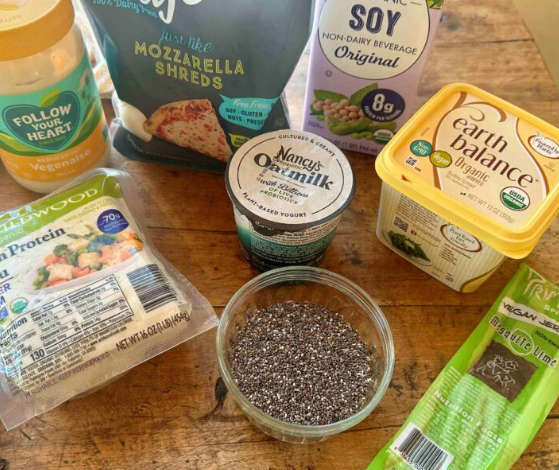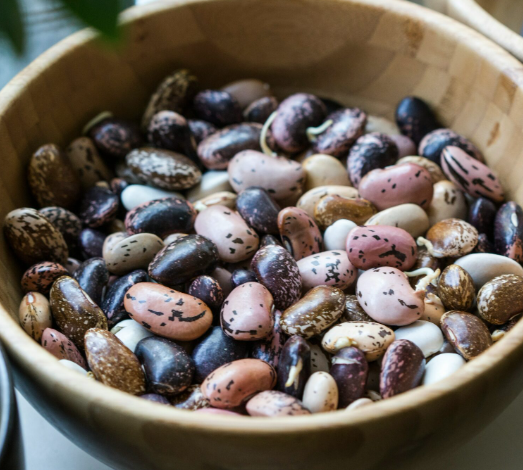
My Essential Plant-Based Grocery List
Navigating the grocery store as a plant-based eater can sometimes feel overwhelming, especially when you’re looking for healthy ingredients that support your lifestyle. But with the right pantry and fridge staples, you can make plant-based eating easy, quick, and absolutely delicious. Here’s my go-to list of ingredients I always keep on hand to ensure I’m ready to cook up satisfying meals, no matter how busy or unprepared I feel.
Whether you’re new to plant-based eating or have been on this journey for a while, this list will make shopping and meal prep simpler and less stressful. Let’s dive into the must-haves that will transform your plant-based cooking experience!
Fruits: Nature’s Instant Energy Boost
Fruits are an essential part of any healthy diet, providing vitamins, antioxidants, and hydration. They’re perfect for snacking or adding to meals for natural sweetness.
Fresh and Frozen Fruits
Keep fruits like bananas, apples, oranges, and berries readily available. These can be enjoyed on their own or added to smoothies and other dishes for a nutritional boost. Fresh berries are especially versatile — you can enjoy them as a snack, add them to oatmeal, or blend them into a refreshing smoothie.
Storage Tips:
Store fresh fruit like apples, pears, and oranges in the fridge to extend their shelf life. For berries, wash them just before eating, and keep them in their original packaging or a breathable container. Frozen berries are perfect for smoothies and can be defrosted quickly when needed.
Healthy Recipes:
Try mixing fresh berries in a smoothie or make a simple fruit salad. Frozen berries are great for making a quick dessert or topping on cereal.
Vegetables: The Backbone of Every Meal
Fresh vegetables are vital for any plant-based diet, as they provide fiber, vitamins, and essential nutrients.
Leafy Greens:
Leafy greens like spinach, kale, collard greens, and arugula should be at the top of your list. These are packed with vitamins, minerals, and antioxidants. They’re great for salads, smoothies, or cooked dishes.
Storage Tips:
Wash your greens when you get home, then store them in airtight containers in the fridge to keep them fresh. Use a salad spinner to remove excess moisture.
Colorful Vegetables:
Carrots, cucumbers, bell peppers, cauliflower, sweet potatoes, and zucchini are all excellent choices. These can be eaten raw as snacks or cooked in various meals. Make sure to pick a variety of colors to maximize your nutrient intake!
Recipes:
Prepare a veggie-packed stir-fry or roast vegetables like carrots and sweet potatoes for a filling side dish. If you’re looking for a hearty meal, try making a vegetable curry with your favorite ingredients.
Plant-Based Proteins: Fuel for Your Body
Protein is essential for muscle repair, energy, and overall health. Incorporating plant-based proteins into your meals is easy with the right ingredients.
Nuts and Seeds:
Almonds, cashews, chia seeds, and hemp seeds are packed with healthy fats and protein. They can be added to smoothies, oatmeal, or enjoyed as a snack.
Beans and Legumes:
Canned or dried beans such as black beans, chickpeas, lentils, and kidney beans are staples. These provide fiber, protein, and essential minerals, making them the perfect addition to salads, soups, or wraps.
Plant-Based Meat Alternatives:
Occasionally, I enjoy plant-based meat substitutes like tofu, tempeh, and seitan. These can be grilled, stir-fried, or used in dishes like vegan tacos or stir-fries.
Storage Tips:
Keep nuts and seeds in the fridge to preserve their freshness. Store beans and legumes in airtight containers, and make sure to rinse canned beans to reduce sodium content.
Recipes:
Make a hearty chickpea salad, or try tempeh stir-fried with vegetables. For a protein-packed breakfast, whip up a tofu scramble.
Whole Grains: Energizing Complex Carbs
Whole grains are a great source of fiber and help regulate blood sugar, keeping you energized throughout the day. They’re also incredibly versatile and filling.
Whole Grains to Keep On-Hand:
- Quinoa
- Brown rice
- Rolled oats
- Barley
- Whole wheat pasta
Storage Tips:
Store whole grains like rice and quinoa in airtight containers in a cool, dry place. For longer shelf life, you can also store grains in the fridge.
Recipes:
Make a quinoa salad with veggies, or prepare a filling bowl of oatmeal with your favorite toppings. Whole grains can also be used in soups or served as a side dish.
Healthy Oils and Fats: Essential for Cooking and Baking
Healthy oils are important for cooking, baking, and adding flavor to your meals. They help provide energy and support various bodily functions.
Healthy Oils to Stock:
- Olive oil
- Avocado oil
- Coconut oil
- Flaxseed oil
Storage Tips:
Store oils in a cool, dark place away from sunlight to prevent them from going rancid. Refrigerate flaxseed oil to extend its shelf life.
Dairy Alternatives: Creamy, Plant-Based Options
Finding plant-based dairy alternatives can make your transition easier, whether it’s for cooking or adding to your coffee.
Non-Dairy Milk:
Oat milk, almond milk, and soy milk are fantastic options for adding to smoothies, baking, or just enjoying with your favorite cereal.
Vegan Cheeses and Butter:
Try cashew-based cheeses or plant-based butter for a creamy, non-dairy alternative. These products are perfect for spreading on toast, adding to pasta, or making a dairy-free pizza.
Recipes:
Use plant-based butter for sautéing or baking, and top your dishes with plant-based cheese for added flavor.
Condiments and Seasonings: Flavor Boosters
To bring your plant-based meals to life, you’ll need some flavorful condiments and seasonings.
Must-Have Condiments:
- Hummus
- Soy sauce or tamari
- Mustard
- Salsa
- Nutritional yeast
Herbs and Spices to Keep on Hand:
- Basil
- Oregano
- Cumin
- Garlic powder
- Turmeric
- Paprika
Recipes:
Use mustard as a dressing for salads, or drizzle hummus on roasted vegetables for added creaminess. Nutritional yeast is a great addition to pasta or sprinkled on popcorn for a cheesy flavor.
Sweeteners: Naturally Sweet Options
Having a few sweeteners on hand allows you to naturally sweeten your dishes when needed.
Sweeteners to Consider:
- Maple syrup
- Agave nectar
- Coconut sugar
- Dates
Recipes:
Add dates to smoothies or oatmeal for natural sweetness, or use maple syrup in baking recipes or as a topping for pancakes.
Conclusion
With these plant-based staples in your kitchen, meal planning and cooking will be simpler, and you’ll always have ingredients on hand to create nourishing, delicious meals. By keeping a variety of fresh fruits, vegetables, proteins, whole grains, and plant-based dairy alternatives in your pantry, you’re setting yourself up for success in maintaining a healthy, plant-based diet.






